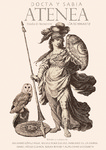Mostrar o rexistro simple do ítem
Interdiscursividad: cine y literatura en Javier Cercas
| dc.contributor.author | Pozuelo Yvancos, José María | |
| dc.date.accessioned | 2019-02-26T12:54:08Z | |
| dc.date.issued | 2019 | |
| dc.identifier.citation | Pozuelo Yvancos, José María. (2019). Interdiscursividad: cine y literatura en Javier Cercas. En Sagrario López Poza, Nieves Pena Sueiro, Mariano de la Campa, Isabel Pérez Cuenca, Susan Byrne y Almudena Vidorreta (Editores), Docta y Sabia Atenea. Studia in honorem Lía Schwartz (pp. 671-682). DOI: https://doi.org/10.17979/spudc.9788497497046.671 | es_ES |
| dc.identifier.isbn | 978-84-9749-704-6 | |
| dc.identifier.uri | http://hdl.handle.net/2183/21976 | |
| dc.description.abstract | [Resumen] Este ensayo intenta corregir o matizar la deriva francesa del concepto teórico de intertextualidad, para traerlo a la fuente originaria del mismo, que se encuentra en Mijail Bajtin. Siguiendo el concepto de interdiscursivitá del teórico italiano Cesare Segre, se ha añadido el concepto de germinativa para extender la relación entre los discursos a un tipo de influencia que se produce cuando un texto desarrolla a otro a partir de una idea o fuerza motriz que se entiende germen o embrión. El estudio se sirve de este concepto para explicar algunas de las principales novelas de Javier Cercas, desde Soldados de Salamina, Anatomia de un instante, las Leyes de la frontera y El monarca de las sombras. Todas estas novelas se pueden entender unidas por una concepción homérica del héroe, que sin embargo se ha desarrollado en Javier Cercas muy influido por el western, en especial el film The man who shot Liberty Valance (1962) de J. Ford, que este estudio sitúa como embrión discursivo de su concepción del héroe, algo que puede recorrerse también en alguno de sus ensayo | es_ES |
| dc.description.abstract | [Abstract] This essay try to correct or nuance the French derivations of the theoretical concept of intertextuality, in order to bring it back to its original source, which is found in Mijail Bajtin. Following the concept interdiscursivitá proposed by the Italian theorist Cesare Segre, it will be introduced the idea of germinativa (germinative) so as to apply the occurring relationship between the discourses to a kind of influence that is produced when one text cultivates another text through a driving force that is discerned as the seed or the germ. The present study utilizes this concept to explain some of Javier Cercas’ novels, since Soldados de Salamina (Soldiers of Salamis), Anatomía de un instante (The Anatomy of a moment), las Leyes de la frontera (Outlaws) and El monarca de las sombras (The Monarch of Shadows). These novels, which can be connected by an Homeric notion of the hero, have actually been developed in Javier Cercas under the influence of the western; especially, as it is examined in this paper, the film The man who shot Liberty Valance (1962) by J. Ford is recognized as the discursive seed of Cercas’ conception of the hero across the cited novels as well as in some of his essays. | es_ES |
| dc.language.iso | spa | es_ES |
| dc.publisher | Universidade da Coruña, Servizo de Publicacións | es_ES |
| dc.relation.uri | https://doi.org/10.17979/spudc.9788497497046.683 | |
| dc.rights | © Los autores | es_ES |
| dc.subject | Interdiscursividad | es_ES |
| dc.subject | Héroe | es_ES |
| dc.subject | Javier Cercas | es_ES |
| dc.subject | Narrativa y western | es_ES |
| dc.subject | Interdiscursivity | es_ES |
| dc.subject | Hero | es_ES |
| dc.subject | Narrative | es_ES |
| dc.subject | Western | es_ES |
| dc.title | Interdiscursividad: cine y literatura en Javier Cercas | es_ES |
| dc.type | info:eu-repo/semantics/article | es_ES |
| dc.rights.access | info:eu-repo/semantics/embargoedAccess | es_ES |
| dc.date.embargoEndDate | 2020-03-01 | es_ES |
| dc.date.embargoLift | 2020-03-01 | |
| UDC.startPage | 671 | es_ES |
| UDC.endPage | 682 | es_ES |
| dc.identifier.doi | https://doi.org/10.17979/spudc.9788497497046.671 |






